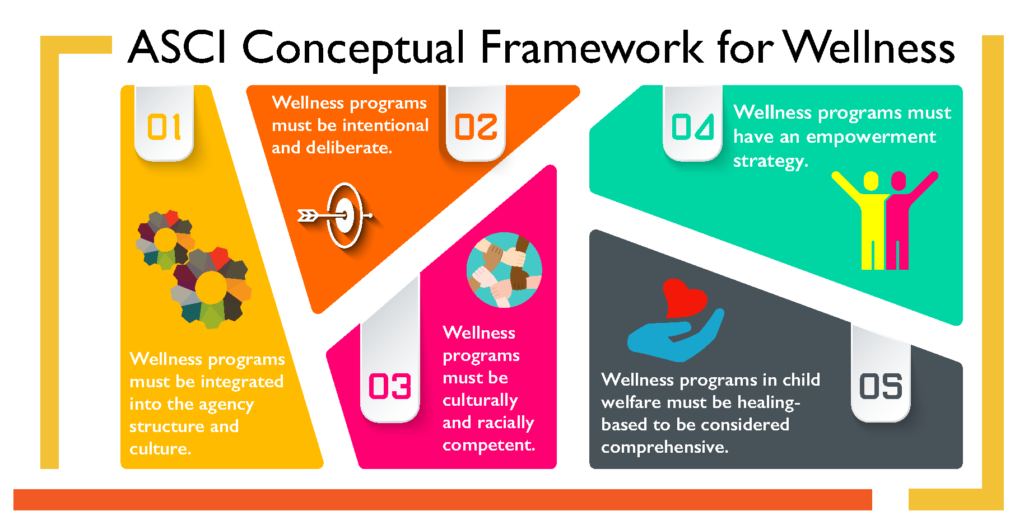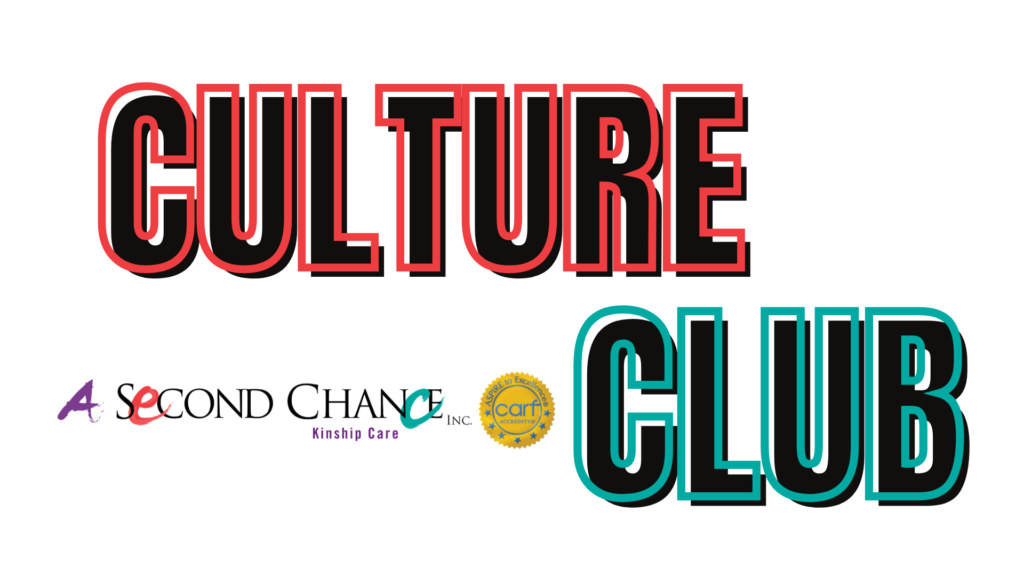Blog
COVID-19 & “Great Resignation” Illuminate Need for Improved, Intentional Wellness Programs in Child Welfare
COVID-19 has not just affected people’s health; it’s affected their finances, mental health and more, such as illuminating “all kinds of reasons to change direction” in their careers. The International Labor Organization, our workforce is the most valuable asset for most organizations, particularly for those in the health and human-services sectors. Unfortunately, the workforce worldwide is experiencing what has been coined the “Great Resignation,” with a record four million people quitting their jobs in April alone. While ASCI has not been immune to this phenomenon, its wellness program has helped the agency retain staff and enhance their well-being by providing weekly wellness tools to cope with the COVID-19 pandemic and its many adverse effects.

Although the causes linked to the Great Resignation are complex and involve pay, working conditions and flexibility, almost all can be linked to a convincing wellness factor.
Turnover in child welfare is nothing new. State and local jurisdictions around the country have tried responding to their own “great resignations” in some capacity for years. The COVID-19 pandemic did not discover race equity issues in health care; it reemphasized what we already knew. It has done the same for resignations in the child welfare space. We know that burnout, salary issues, secondary trauma and work-life balance are behind child welfare turnover, but the pandemic brought to light the ineffectiveness of the sector’s wellness practices to address those concerns. Transactional processes in child welfare have short-term impact. This is why wellness must be part of a strategic plan, so it becomes transformational. For child welfare, a “great resignation” will always be a threat unless we utilize wellness as a strategy to retain current and future workforces. The ASCI Conceptual Framework for Wellness has responded to this threat for 27 years.

While employee well-being was a priority from the agency’s inception, its wellness process became even more meaningful in 2000, when as part of her applied dissertation, ASCI’s president and CEO Dr. Sharon McDaniel examined the antecedents of stress and burnout in human-services employees, to create a better approach to ensuring organizational sustainability through employee wellness and satisfaction.
This examination comprised a nine-month intervention wellness strategy, which included an onsite employee assistance program (EAP); informal well childcare (i.e., bring your child to work when sick); group and individual fitness programs; fun onsite activities; personal budgeting and responsible consumer spending; and personal spa services. The data revealed a lower stress index, reduced unplanned leave, more satisfied employees and higher employee retention levels. This program has been maintained ever since, experiencing positive growth, evolution and innovation.
According to the National Wellness Institute (NWI), wellness is an “active process through which people become aware of, and make choices toward, a more successful existence.”
ASCI has made wellness not just an active process, but also a consistent one. The Great Resignation has unveiled deficiencies in employee wellness systems and organizational culture over the years. As is often the case in child welfare, “a one and done” training or event will not yield results among staff. As many companies’ wellness programs “often equate to sticking a band-aid on a wooden leg doing little or nothing to address the root causes of the problem,” notes the Global Wellness Institute, a paradigm shift is needed to transform the workforce instead.
At ASCI, our wellness process begins with our dedicated Wellness Committee: Shamena Thomas, Benefits Manager IV; Vania McClendon, Communications Generalist; Joy Price, Technology Trainer Coordinator; and Doreen Thomas, Human Relations Supervisor II. While ASCI’s wellness program previously occurred twice monthly—and included not only wellness events but also staff birthday celebrations and paid time off for cancer screenings—the pandemic illustrated the need for more frequent wellness opportunities, and these dedicated staff volunteer to plan wellness events for staff every week on top of their regular work duties.



“Dr. McDaniel initiated Wellness Fridays to give us a platform to remain socially interactive at a distance while bumping up our wellness program,” Shamena explains. “The response to Wellness Fridays has been very positive. Staff appreciate the virtual interactions in the form of meditation, stress management, beginner’s workouts, arts and crafts, and virtual guests with informative presentations.”
One such staff member, billing specialist Aayesha Bell, never misses a Wellness Friday. “Wellness Friday is the highlight of my week and has been since the team started it last year,” she says. “During the pandemic shutdown, attending the wellness events provided an opportunity for all attendees to breathe, learn and laugh together. The activities are informative, interactive and good-health oriented in regard to body, mind and spirit. For someone like me who lives alone, it felt like I was able to have company over every Friday. My favorite activities are the crafts we attempt (which I always mess up, but that is part of the fun), and my favorite part is when I win the games!”
Committee member Joy offers that wellness “is a blast! It allows me to spend time with awesome co-workers while staying safe by being socially distanced and still have fun, all while learning and exploring new topics.”
“I truly enjoy Wellness,” her colleague Vania shares, who emphasizes that their events bring together staff in a unique way. “We get to come up with different ideas each week to keep staff involved with one another in both the Pittsburgh and Philadelphia offices. I’ve gained a new understanding and fondness of staff who I wouldn’t have otherwise had the opportunity to ever come across. It’s really fun when staff get excited about what we’ve planned! I believe that Wellness really puts the ‘kin’ in kinship.”
Aayesha adds that wellness should be a regular offering in all organizations, because “it provides something positive to look forward to (especially during a time of devastation like the pandemic) and offers the opportunity for employees to meet and engage and just have fun—even if only for one day out of the week.”
Wellness is best supported in a values-driven model. In its purest form, a values-driven model in child welfare is proactive family engagement, executed with a sense of urgency toward an identified positive outcome that can be substantiated through data. Wellness itself should be proactive and aimed toward a positive outcome, thus the processes should align. Much of child welfare, however, is deficit-based where we are reactive, prescriptive in execution timelines and guided by opinionated qualitative data that is interpretive at best.

Wellness is also part of a learning-based culture. The ASCI wellness program is already embedded into a learning culture, one in which the staff are continually engaged with new knowledge and skills to better address individual and agency performance. ASCI recognizes through its values-driven model that wellness in child welfare means presenting learning topics that:
- Address learning styles that consider caring for mind, body and spirit/soul.
- Comprise content that acknowledges personal life experiences in the context of race and culture.
- Keep the activities active and enable staff to self-define the wellness concept.
As positive as the response has been at ASCI, a wellness program means nothing if a value for employees’ emotional and mental well-being is not embedded in the organizational culture.
Therefore, as another strategy to ensure enhanced emotional and mental well-being among staff, ASCI has launched a new internal committee—the “Culture Club”—to give employees at all levels and in all departments ownership over the organizational culture so they can create a lasting atmosphere of support, transparency, stability, motivation, psychological safety and belonging for each and every staff member.
One of the ASCI Culture Club’s brainchildren, senior executive leadership consultant James Stratford, asks, “What would it look like for people to feel lucky and blessed to work at a company?” The Culture Club’s goal is to allow staff to be transparent about what that looks like at ASCI, in order to paint a new picture.

“People at the organization are the experts; they don’t have to hire a consultant to tell the organization what the culture is. The people know,” Stratford adds. “Every organization has a culture that is either set passively or intentionally.” And intentionality is precisely what the agency is injecting into its effort to enhance the organizational culture for the benefit of its entire staff.
Senior Director II of Communications Kathleen Gima, who will be advising the Culture Club alongside Stratford, notes that while “our top priority is serving children and families, we need to show employees that they’re a priority, as well. That has to be part of the culture. Employees should never have to wonder if we care about their well-being—we want them to feel it and know it every day they walk through the door.”